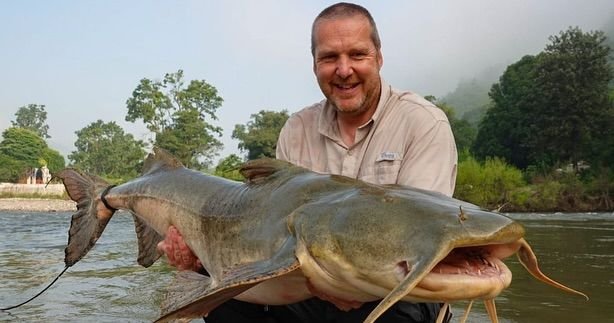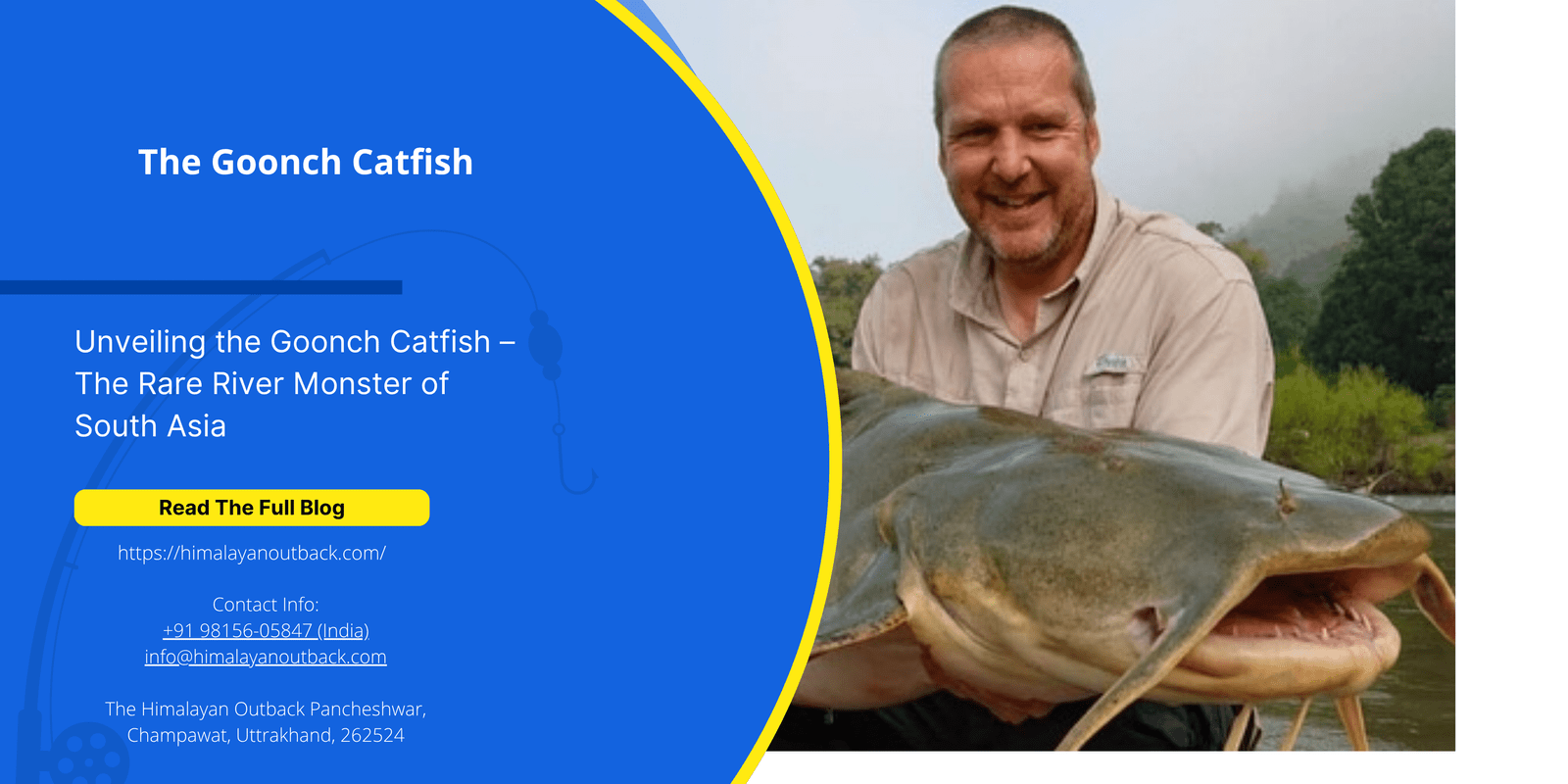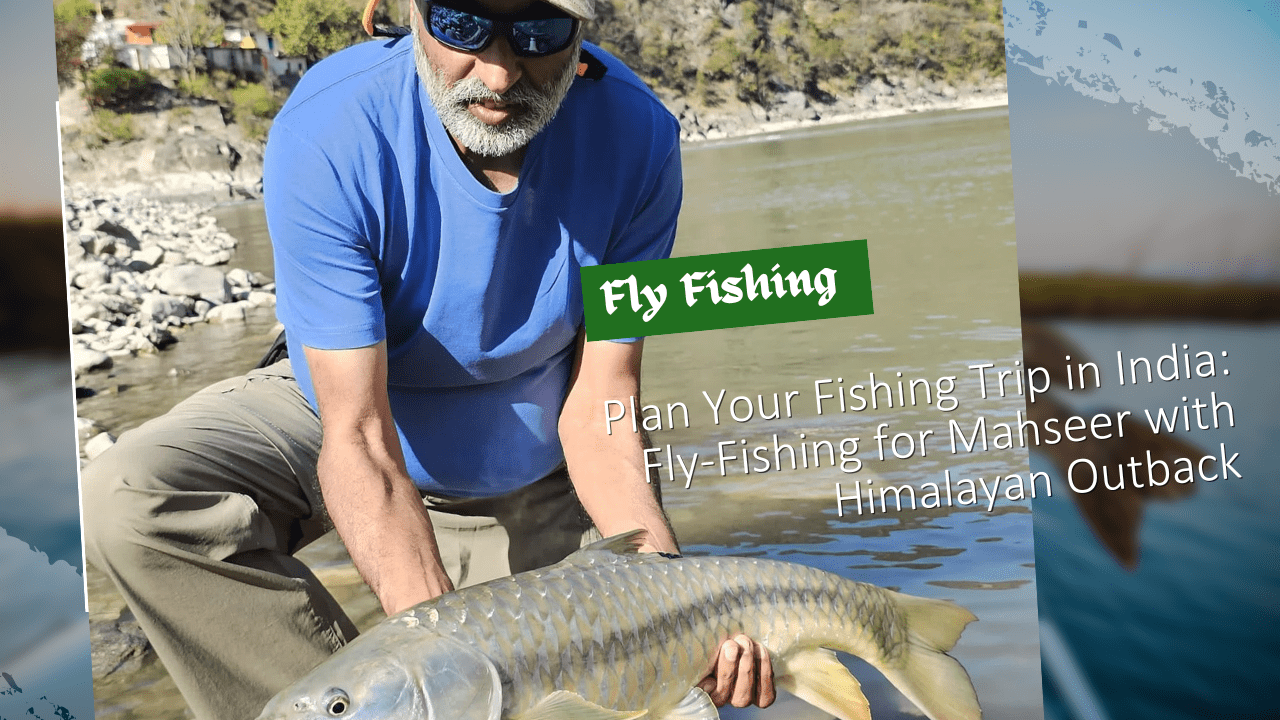Deep in the rushing waters of South Asian rivers lurks a creature so formidable that local legends speak of it in hushed tones. The Goonch Catfish, a prehistoric-looking giant, has captured the imagination of anglers, researchers, and adventure seekers worldwide. This remarkable species represents one of nature’s most impressive freshwater predators, combining ancient evolutionary traits with modern-day mystery.
Unlike typical catfish species found in calmer waters, the Goonch Catfish thrives in fast-flowing rivers throughout the Himalayan region. Its massive size, distinctive appearance, and elusive nature have earned it a reputation as one of the most challenging fish to catch in the world. For those brave enough to pursue this aquatic giant, the reward extends far beyond the fishing experience—it’s an encounter with a living piece of natural history.
The fascination with this species goes beyond its impressive dimensions. Recent incidents in remote Indian villages have added an element of intrigue to the Goonch Catfish legend, with some researchers suggesting these powerful fish may have been involved in unexplained attacks on humans. Whether fact or folklore, these stories have only intensified the mystique surrounding this remarkable creature.

Physical Characteristics and Habitat
The Goonch Catfish stands out as one of the most distinctive freshwater fish in South Asia. Adult specimens can reach lengths of up to six feet and weigh over 100 pounds, making them true giants of the river ecosystem. Their elongated, muscular bodies are perfectly adapted for life in fast-flowing waters, with a flattened head and powerful tail that allows them to navigate strong currents with surprising agility.
What makes the Goonch Catfish particularly striking is its prehistoric appearance. The fish features a broad, flattened mouth filled with rows of small, sharp teeth—an adaptation that makes it an efficient predator. Its skin has a mottled brown and gray coloration that provides excellent camouflage against rocky river beds, while prominent barbels (whisker-like sensory organs) help it locate prey in murky water conditions.
These remarkable fish inhabit the river systems of northern India, Nepal, and Pakistan, particularly favoring the fast-flowing tributaries of the Ganges and Indus river systems. The Western Ramganga River in Uttarakhand, India, has become particularly famous among anglers seeking trophy-sized specimens. The Goonch Catfish prefers deeper pools and rocky crevices where it can ambush prey, typically remaining hidden during daylight hours and becoming more active at night.
The species thrives in water temperatures between 18-28°C (64-82°F) and requires well-oxygenated water with moderate to strong currents. These environmental preferences limit their distribution to specific river sections, making encounters with large specimens relatively rare and highly prized among fishing enthusiasts.
Behavior and Diet
Understanding the behavior patterns of the Goonch Catfish is crucial for anyone hoping to encounter this elusive species. These fish are primarily nocturnal hunters, spending daylight hours hidden in deep pools or rocky crevices. As darkness falls, they emerge to patrol their territory in search of prey, using their sensitive barbels to detect movement and chemical signals in the water.
The diet of adult Goonch Catfish consists primarily of other fish species, including smaller catfish, carp, and various river fish. However, their opportunistic feeding behavior means they will consume virtually any protein source available, including crustaceans, mollusks, and occasionally small mammals that venture too close to the water’s edge. This adaptability has contributed to their success as apex predators in their river ecosystems.
Young Goonch Catfish have different dietary preferences, focusing on insects, worms, and small aquatic invertebrates. As they mature and grow larger, their diet gradually shifts to include bigger prey items. This ontogenetic diet shift is common among large predatory fish and allows different age groups to utilize various food resources within the same habitat.
The hunting strategy of the Goonch Catfish relies heavily on ambush tactics. These fish position themselves near underwater structures or in areas with strong currents where potential prey might be disoriented. Their ability to remain motionless for extended periods, combined with their excellent camouflage, makes them formidable predators in their aquatic environment.
The Legend and Mystery
The Goonch Catfish has become the subject of numerous local legends and international documentaries, particularly after reports of mysterious attacks in remote villages along Indian rivers. Between 1998 and 2007, several unexplained drowning incidents in the Kali River region of northern India sparked investigations and theories about the possible involvement of large Goonch Catfish.
Television programs and research expeditions have explored these incidents, with some experts suggesting that exceptionally large specimens might have developed unusual feeding behaviors. The theory proposes that access to protein-rich sources, including human remains from traditional funeral practices, could have contributed to the growth of unusually large and potentially aggressive individuals.
While scientific evidence for human attacks remains inconclusive, these stories have significantly enhanced the mystique surrounding the species. The combination of the fish’s imposing size, powerful build, and remote habitat has made it a perfect subject for both scientific study and popular culture fascination.
Local fishing communities have long respected these fish, often considering them sacred or supernatural. Traditional fishing practices in many areas specifically avoided targeting large catfish, viewing them as guardian spirits of the river. This cultural reverence may have contributed to the survival of trophy-sized specimens in certain river sections.
Fishing for the Goonch Catfish
Pursuing the Goonch Catfish represents one of the ultimate challenges in freshwater angling. Specialized tour operators, such as The Himalayan Outback, have developed dedicated fishing expeditions specifically targeting this species. These trips typically run from April to May and October to November when river conditions are optimal and fish activity is highest.
Successful Goonch Catfish fishing requires specialized equipment and techniques. Heavy-duty rods capable of handling fish weighing over 100 pounds are essential, along with strong reels and high-test fishing line. Bait fishing is the preferred method, with fresh fish baits being most effective. Many experienced guides recommend using local fish species as bait, as Goonch Catfish show a preference for familiar prey items.
The fishing technique involves positioning baits in deep pools or near underwater structures where large specimens are likely to hunt. Patience is crucial, as these fish are known for their cautious feeding behavior. Most successful catches occur during nighttime hours when the fish are most active, requiring anglers to fish in darkness while maintaining constant vigilance for subtle bite indicators.
Professional fishing guides familiar with Goonch Catfish behavior play a crucial role in successful expeditions. They possess intimate knowledge of local river conditions, seasonal patterns, and the specific locations where trophy fish are most likely to be encountered. The Western Ramganga River system, with locations like Bhikiasen, Tharar, and Marchula, has established itself as a premier destination for serious Goonch Catfish anglers.
Conservation Status and Challenges
The conservation status of the Goonch Catfish reflects the broader challenges facing large freshwater fish species across South Asia. While not currently listed as endangered, several factors threaten the long-term survival of healthy populations. Dam construction represents the most significant threat, as these structures alter river flow patterns and block migration routes essential for the species’ life cycle.
Water pollution from industrial and agricultural sources poses another serious challenge. The Goonch Catfish requires clean, well-oxygenated water to thrive, making it particularly vulnerable to degraded water quality. Heavy metals, pesticides, and other contaminants can accumulate in the tissues of these long-lived fish, affecting their health and reproductive success.
Overfishing, while not traditionally a major concern due to the species’ challenging nature, has become more problematic as fishing pressure increases. The growing popularity of specialized angling tourism, while providing economic benefits to local communities, must be carefully managed to ensure sustainable harvest levels.
Climate change adds another layer of complexity to conservation efforts. Changing precipitation patterns and increasing temperatures can significantly impact river ecosystems, potentially altering the habitat conditions that Goonch Catfish require for survival and reproduction.
Research and Scientific Study
Scientific research on the Goonch Catfish remains limited compared to more commercially important fish species, but recent years have seen increased interest from researchers and conservationists. Studies have focused on understanding the species’ ecology, population dynamics, and habitat requirements to inform conservation strategies.
Genetic research has revealed interesting insights into the evolutionary history of the Goonch Catfish and its relationship to other catfish species. These studies suggest that the species has remained relatively unchanged for millions of years, earning it the designation as a “living fossil.” Understanding this evolutionary background helps scientists appreciate the unique ecological role these fish play in their river ecosystems.
Tagging studies have provided valuable information about the movement patterns and habitat use of adult Goonch Catfish. These fish show strong site fidelity to specific river sections, but they also undertake seasonal movements related to breeding and feeding. This information is crucial for developing effective conservation strategies that protect critical habitat areas.
Age and growth studies indicate that Goonch Catfish are extremely long-lived, with some specimens potentially reaching ages of 50 years or more. This longevity, while contributing to their impressive maximum sizes, also makes populations vulnerable to overharvest and slow to recover from population declines.
Planning Your Goonch Catfish Adventure
For anglers interested in pursuing the Goonch Catfish, proper planning and realistic expectations are essential. Specialized fishing expeditions typically last 7-10 days and require a significant investment in both time and money. The challenging nature of the target species means that success is never guaranteed, but the experience of fishing in pristine Himalayan rivers provides rewards beyond the catch itself.
Physical fitness and mental preparation are important considerations for prospective Goonch Catfish anglers. The remote locations, basic camping conditions, and demanding fishing techniques require participants to be in reasonable physical condition and mentally prepared for challenging conditions. Night fishing sessions can be particularly demanding, requiring sustained concentration and physical endurance.
Equipment selection should prioritize quality and reliability over cost savings. The remote locations and specialized nature of the fishing mean that equipment failures can end an expedition prematurely. Consulting with experienced guides and outfitters about specific tackle recommendations is highly advisable.
Weather conditions and seasonal timing significantly impact expedition success rates. The optimal fishing seasons coincide with specific river conditions and fish behavior patterns, making timing crucial for maximizing the chances of encountering trophy specimens.
The Future of the River Monster
The future of the Goonch Catfish depends on balancing human development needs with conservation requirements. Protecting the pristine river habitats these fish require while supporting local economic development presents complex challenges that require innovative solutions and collaborative approaches.
Sustainable fishing tourism offers one potential path forward, providing economic incentives for habitat protection while allowing people to experience these remarkable fish firsthand. Well-managed catch-and-release fishing programs can support local communities while minimizing impacts on fish populations.
Education and awareness programs play crucial roles in building support for Goonch Catfish conservation. As more people learn about these remarkable fish and their ecological importance, public support for protection measures typically increases. Documenting the species through photography, research, and responsible fishing practices helps build this awareness.
The Goonch Catfish represents more than just a fishing target or tourist attraction—it’s a symbol of the wild, untamed rivers of South Asia and a reminder of the remarkable biodiversity these ecosystems support. Ensuring the survival of this prehistoric giant requires commitment from governments, communities, researchers, and individuals who value the natural world.
Whether pursued by dedicated anglers or studied by researchers, the Goonch Catfish continues to inspire awe and respect for the power and mystery of nature. Its survival serves as a testament to the resilience of wild ecosystems and the importance of protecting the last strongholds of true wilderness in our rapidly changing world.






